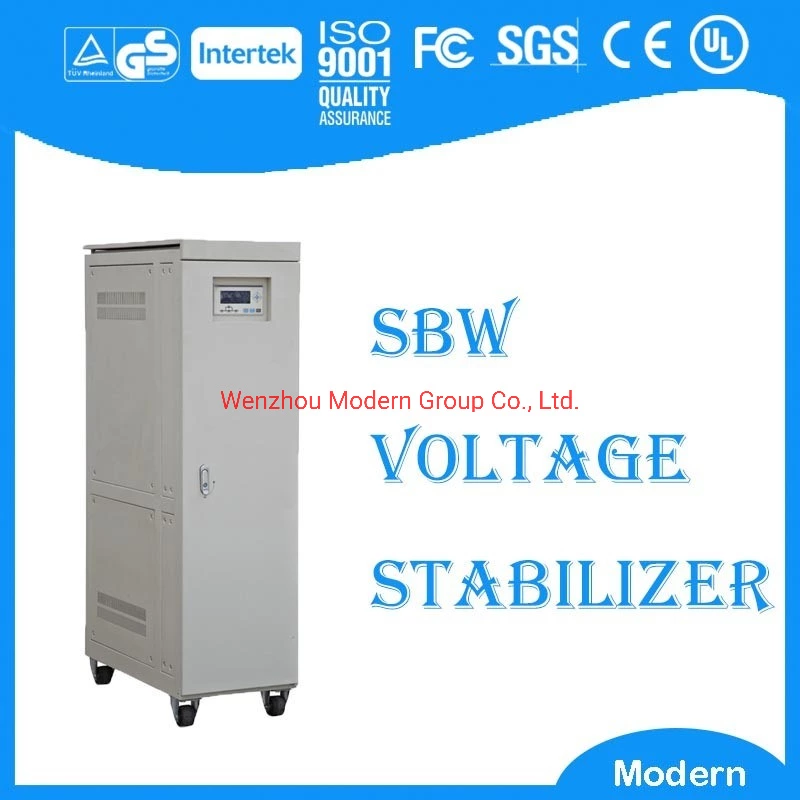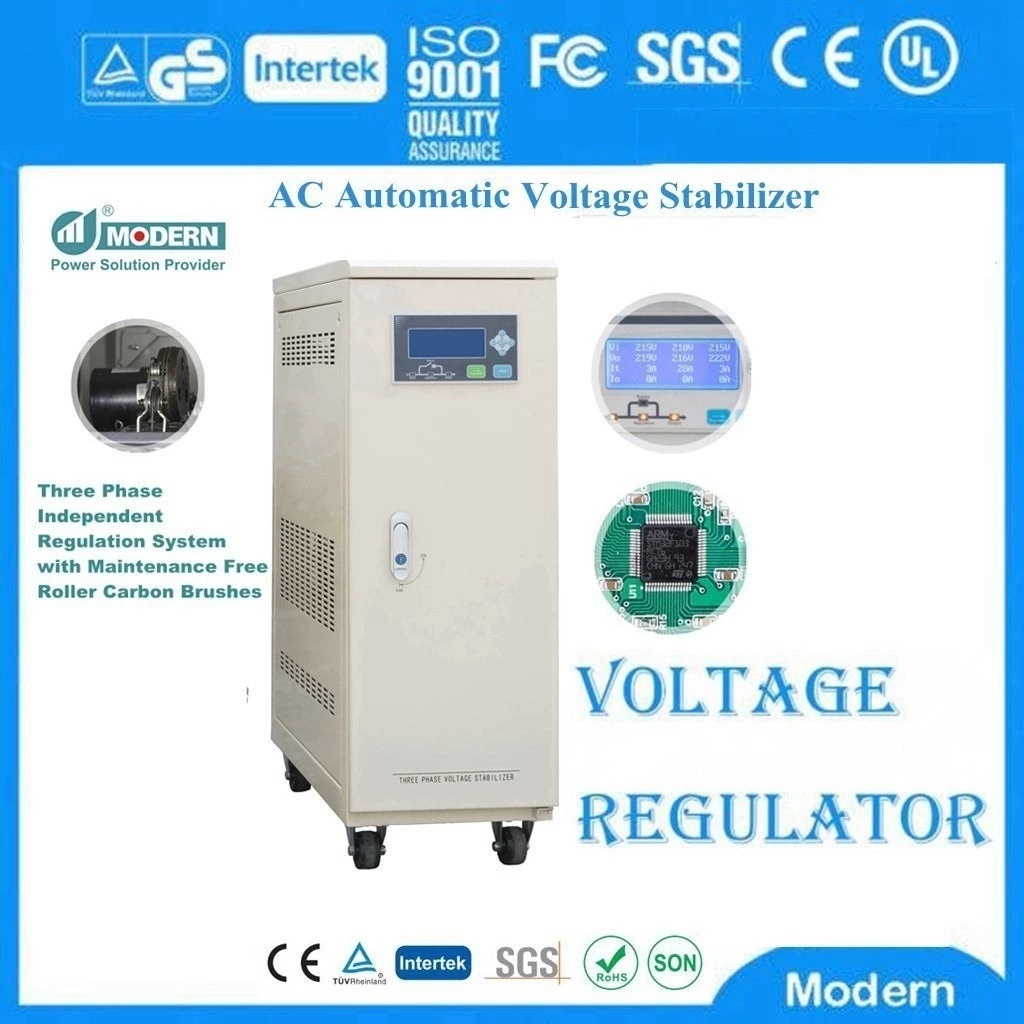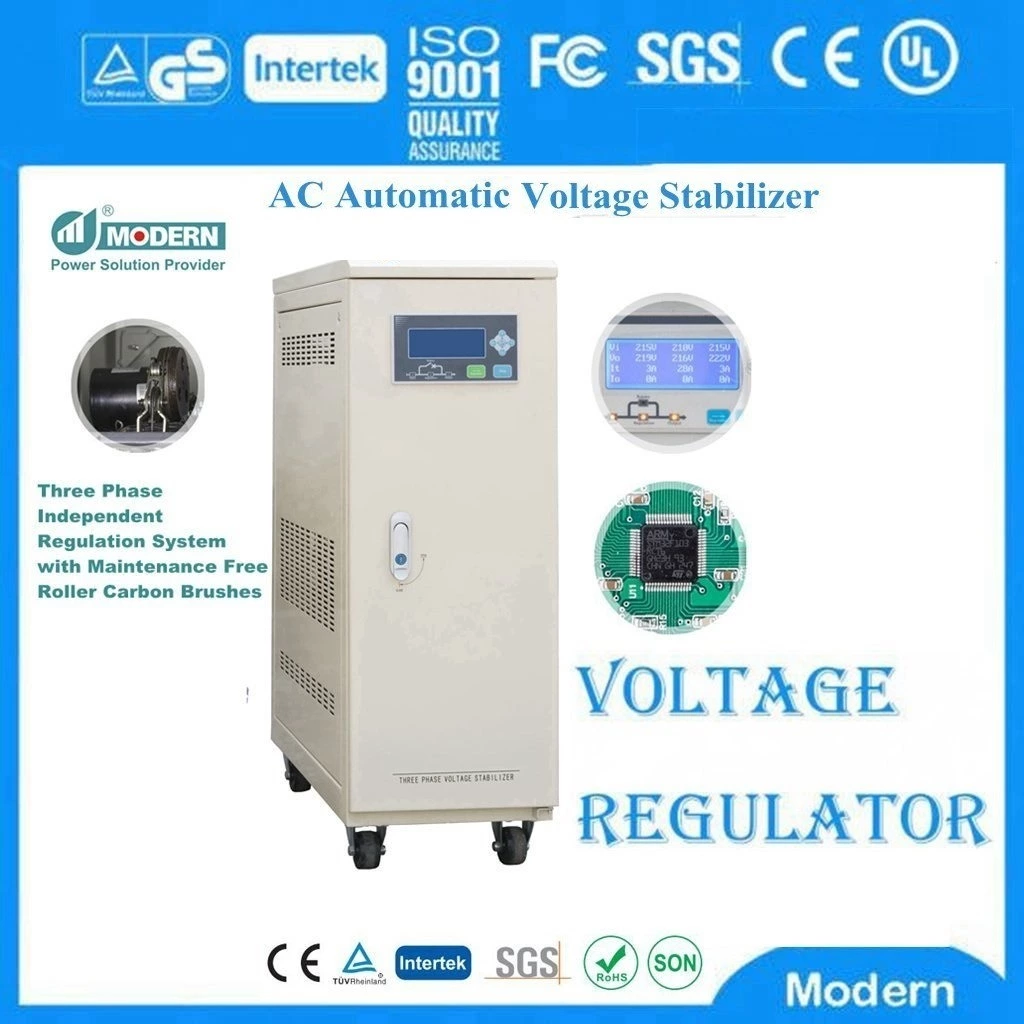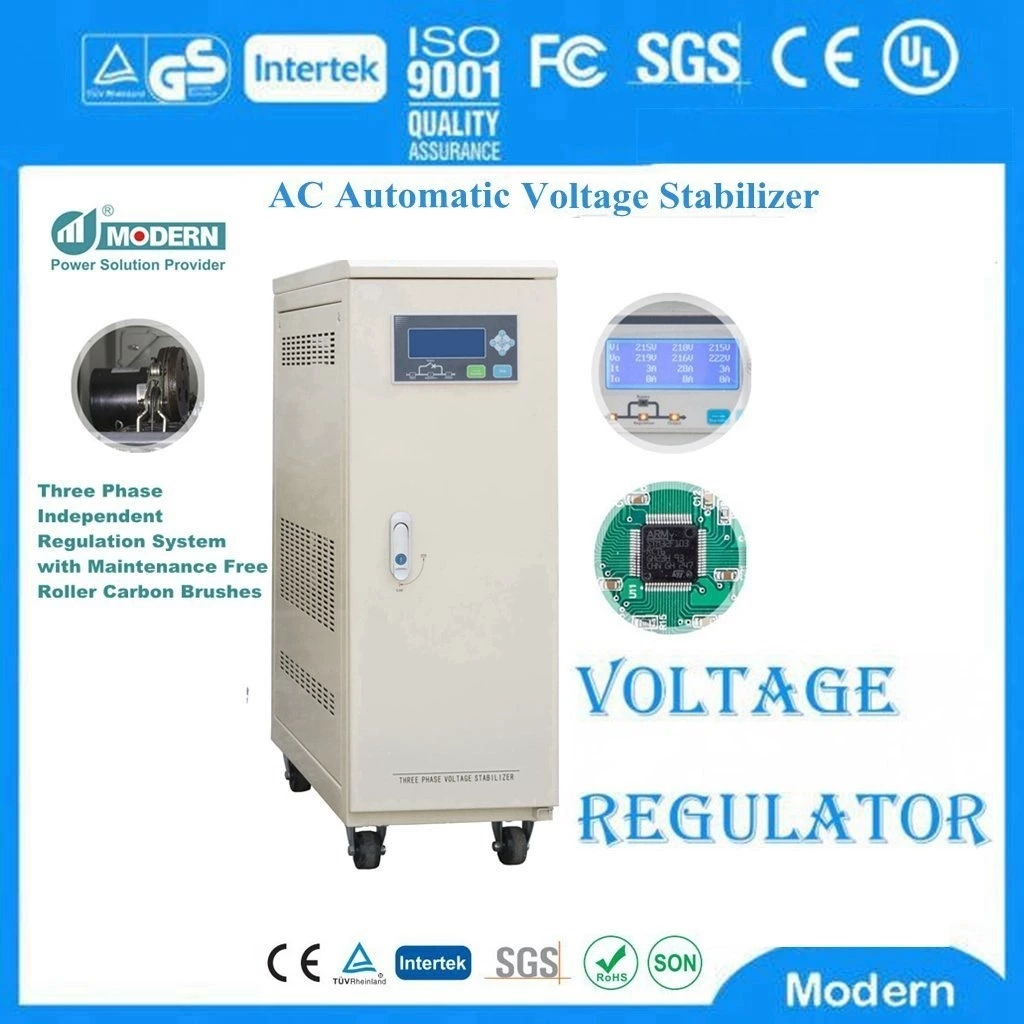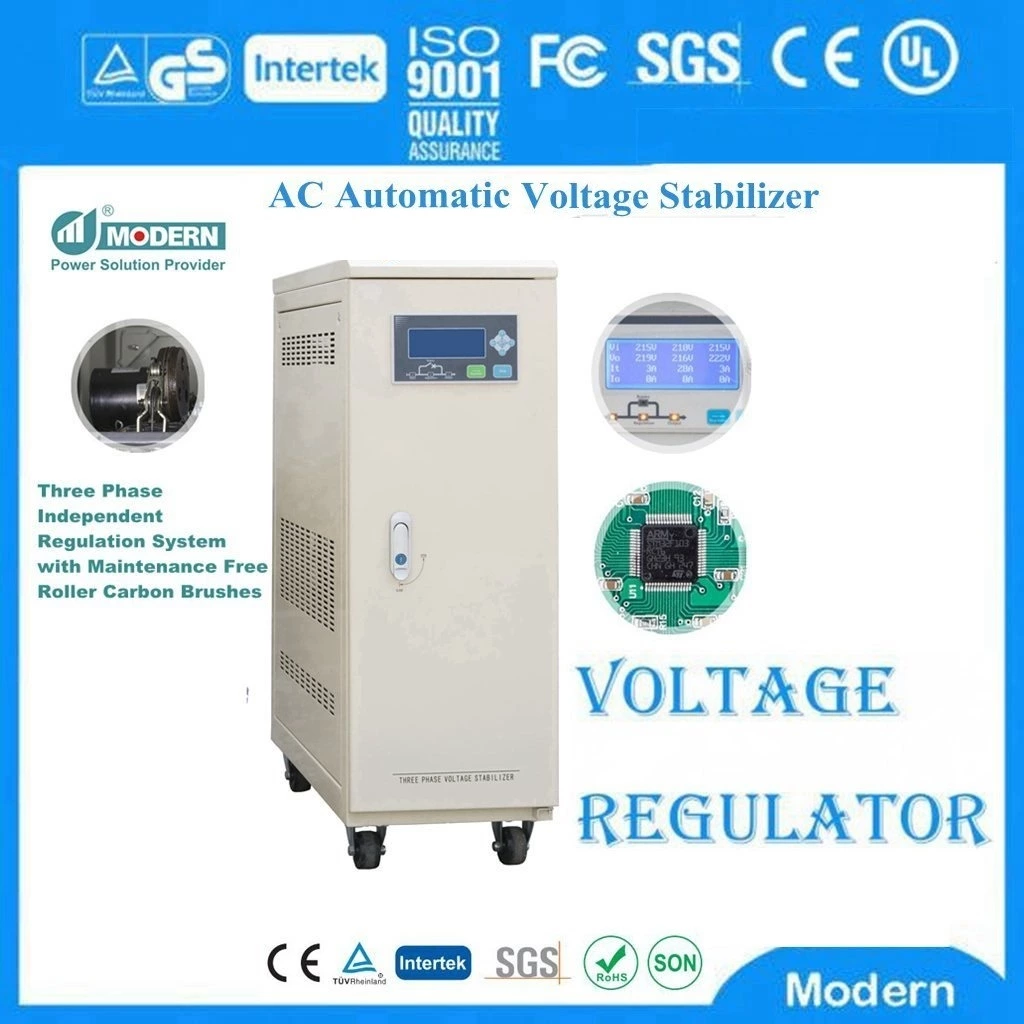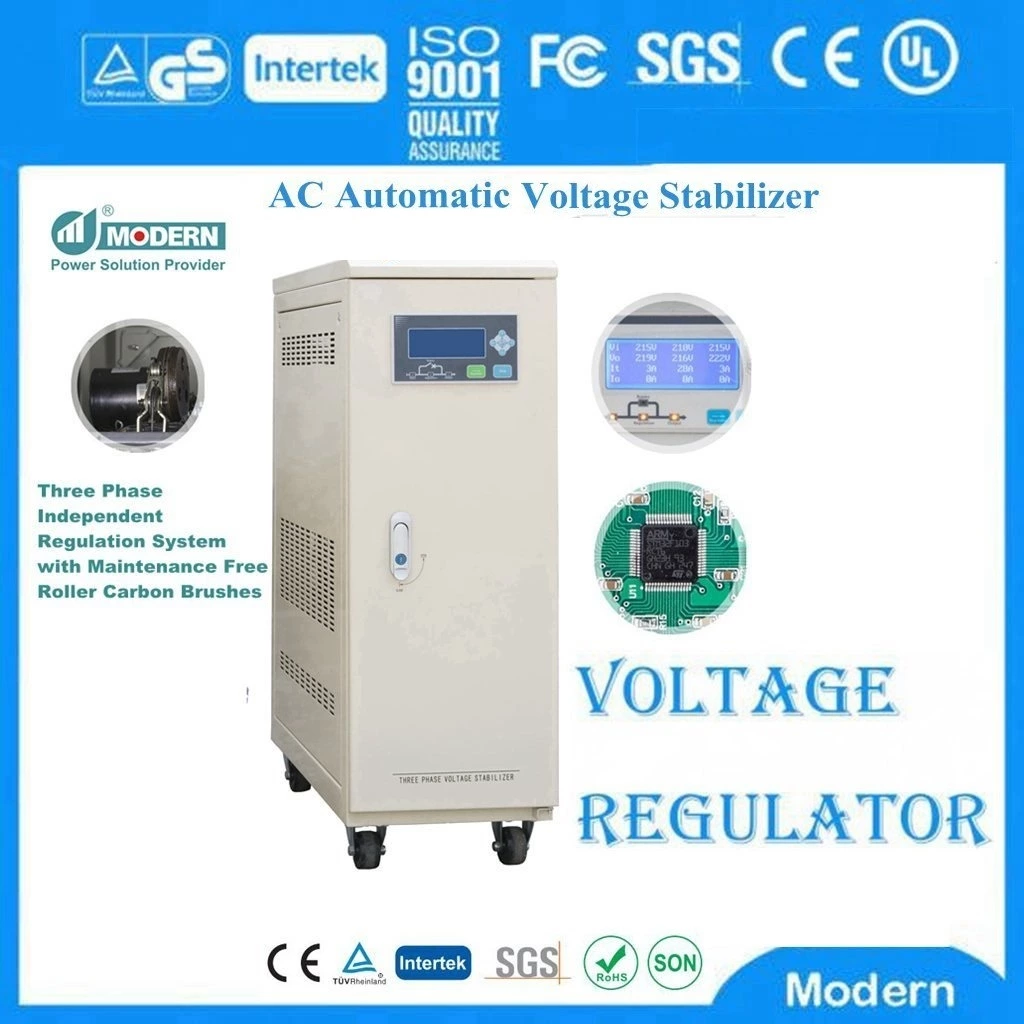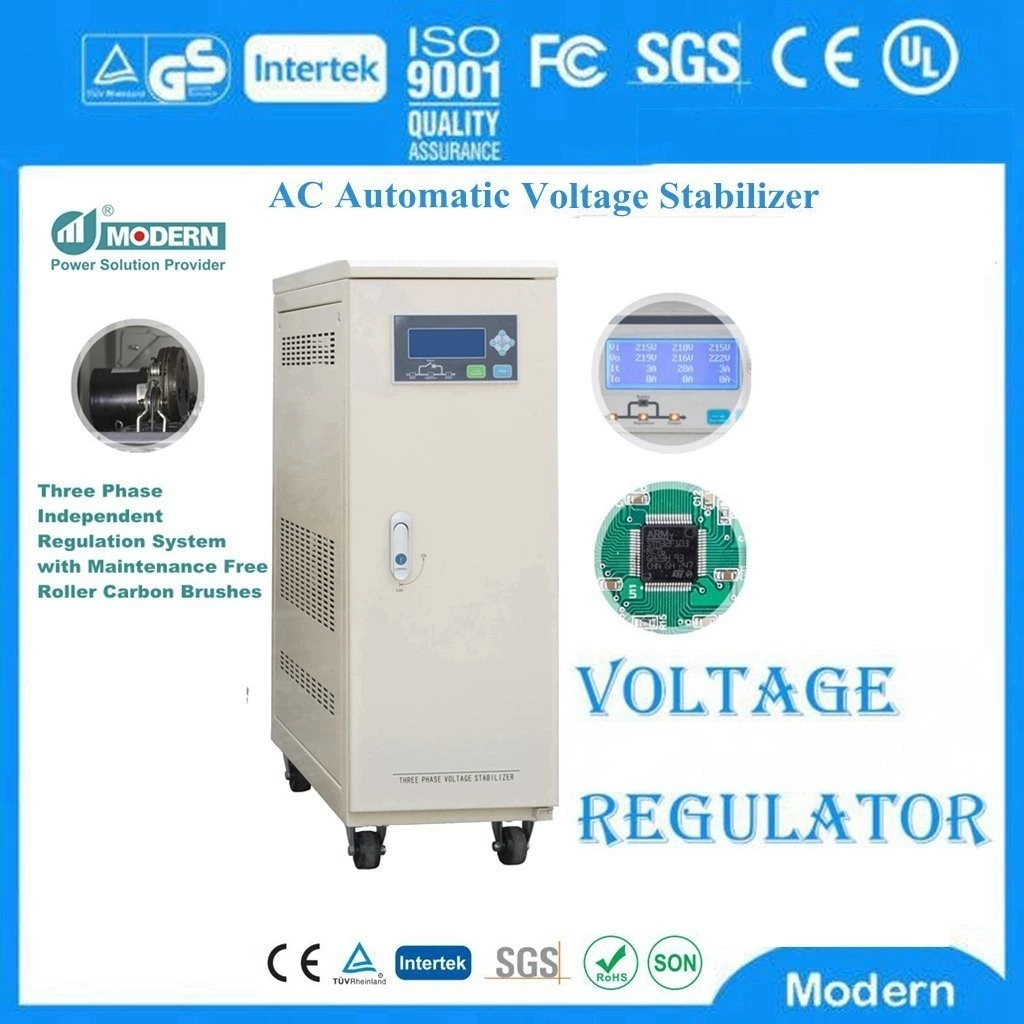This article will give you a comprehensive understanding of the working principle, function and characteristics of the voltage stabilizer. Let’s take a look!
Working principle, function and types of AC voltage stabilizer
The working principle of Static Voltage Stabilizer is to achieve the purpose of voltage stabilization by adjusting the corresponding compensation voltage according to the input voltage of the power grid circuit. Generally, when the voltage input changes, the voltage stabilizer will sample and compare through the control circuit, and then drive the rotation of the servo motor to drive the chain (the new model is the wire rope) to change the position of the voltage regulator carbon brush. By automatically adjusting the coil, the output voltage reaches the target value. The latest voltage stabilizer can adjust the voltage of each phase according to the high and low values of the input voltage A phase, B phase, and C phase, so that the load equipment can be used normally under unstable voltage conditions and extend the service life of the load equipment.
The voltage stabilizer consists of a voltage regulating circuit, a control circuit, and a servo motor mechanical transmission. When the input voltage or load changes, the control circuit samples, compares, and amplifies, and then drives the servo motor to rotate forward (or reverse), so that the position of the voltage regulator carbon brush (the latest model is a maintenance-free roller carbon brush) changes, and the output voltage is kept stable by automatically adjusting the coil turns ratio. Voltage stabilizers with large capacity or wide voltage range are also designed based on the principle of secondary voltage compensation.
Function of voltage stabilizer: A voltage stabilizer is a power supply circuit or power supply equipment that can automatically adjust the output voltage. Its function is to stabilize the power supply voltage that fluctuates greatly and does not meet the requirements of electrical equipment within its set value range, so that various circuits or electrical equipment can work normally.
Features of voltage stabilizer: reliable operation, strong overload capacity, automatic protection of output over-voltage and under-voltage, simple structure, large voltage range, and strong anti-interference ability.
The voltage stabilizer is suitable for the following ranges: large medical equipment, new energy, automatic testing equipment, radio and television equipment, postal and telecommunications equipment, automatic plug-in machines, industrial production lines, printing equipment, plastic injection equipment, CNC equipment, lasers, robots, scientific research test laboratories, mining terminal equipment and voltage-sensitive equipment, etc.
Common types of voltage stabilizers include: high-power voltage stabilizers, purified power supply AC voltage stabilizers, and parameter voltage stabilizers. Their advantages and disadvantages are as follows:
1. High-power voltage stabilizer
The advantages of this type of voltage stabilizer, carbon brush compensation type voltage stabilizer, are good reliability, no waveform distortion, high efficiency, low failure rate, maintenance-free, and strong impact resistance.
2. Purified power supply AC voltage stabilizer
The emergence of this type of AC voltage stabilizer is mainly to replace the original magnetic saturation type and 614 type electronic tube type voltage stabilizer. It has high reliability and the ability to isolate interference. However, the adjustment range of this circuit is narrow, generally only suitable for ±10% of the rated grid voltage, and the power is not easy to increase. This obviously cannot meet the requirements of the telecommunications department, so it is generally not within the scope of consideration.
3. Parameter voltage stabilizer Parameter voltage stabilizer is a commonly used voltage stabilizer with high reliability. Since the parameter voltage stabilizer works in a resonant state, it has a strong ability to isolate and resist interference. It is very suitable for low-power instruments, such as various spectrum analyzers, microcomputers, control circuits, etc. However, the power should not be too large because the noise is too large. The above is collected and sorted out, and I hope it will be helpful to everyone.
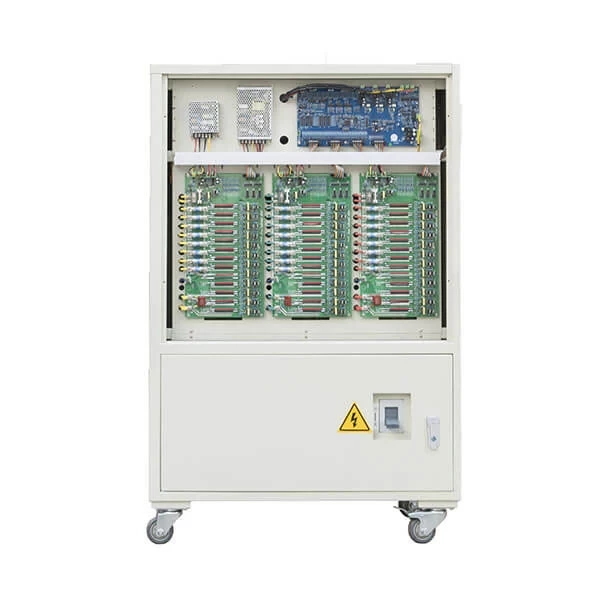
 Русский
Русский
 Français
Français
 Português
Português
 Español
Español
 اللغة العربية
اللغة العربية
